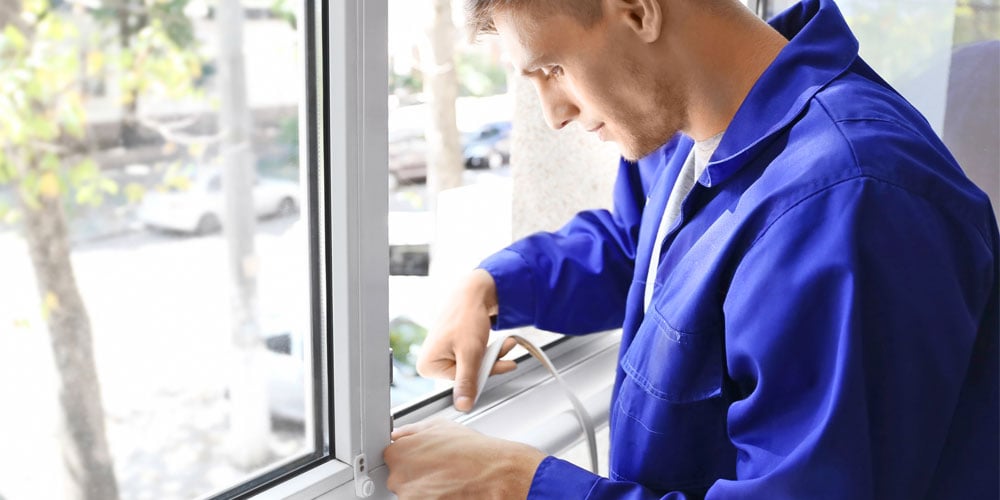Energy Efficient Insulation vs. New Windows: What’s the Best Option for Your Home?


When thinking about upgrading your home’s energy efficiency, two options come to mind almost immediately: new windows and insulation.
Both play a significant role in keeping your home warm in the winter and cool in the summer, but which will give you the best energy savings? If you’re asking yourself, “Do new windows save energy?” or “Should I focus on insulation instead?” you’re not alone.
In this article, we’ll dive into how energy-efficient insulation and new windows compare and help you figure out which investment will give you the biggest bang for your buck. We’ll also talk about how insulation and energy efficiency work hand in hand to improve the comfort and cost-effectiveness of your home.
What's More Energy Efficient: Insulation or Windows?
If you’re wondering whether to prioritize insulation or windows, you’re not the only one.
Many homeowners face this exact dilemma. The short answer is: most of the time, investing in new insulation will give you the highest return in energy savings. However, new windows can also make a huge difference, especially if your current windows are outdated and drafty.
Let’s break down what each option offers and when one might be better than the other.
Insulation: The Unsung Hero of Energy Efficiency
Insulation is one of the most crucial elements when it comes to keeping your home energy efficient.
Whether it’s in your attic, crawl space, or exterior walls, insulation acts as a barrier to prevent air from leaking in or out of your home. The more effective your insulation, the less your HVAC system has to work to maintain a comfortable temperature.
Think of insulation like a blanket around your home. The thicker and more complete the blanket, the warmer (or cooler) it keeps you. Modern products like RetroFoam injection foam insulation can be injected into your walls to provide an airtight seal, significantly improving your home’s ability to hold heat in the winter and keep it out in the summer.
New insulation is usually your best be for overall energy savings. This is especially true if your home still has its original insulation, which could be decades old. Suppose your house was built 30 or more years ago. In that case, chances are that the insulation isn’t performing at its peak, and replacing it with modern materials can drastically improve your home’s energy efficiency.
Signs you need new insulation:
- Your home was built more than 30 years ago and still has the original insulation.
- You feel drafts in certain areas, even when windows and doors are closed.
- You notice inconsistent temperatures between rooms.
- Your energy bills are higher than expected for your home size and climate.
If any of these sound familiar, it may be time to consider reinsulating your home, particularly in key areas like the attic, crawl space, and exterior walls.
Windows: A Key Part of Your Home's Building Envelope
Windows also play a critical role in your home’s energy efficiency.
After all, they’re part of your building envelope – the barrier between your indoor environment and the outdoors. If your windows are old, drafty, or poorly sealed, they can account for a significant portion of your home’s energy loss.
When people ask, “Do new windows help with energy efficiency?” the answer is yes – but there’s a caveat. While replacing your windows can certainly improve efficiency, it’s often not as impactful as improving your insulation. That said, if your windows are in terrible condition – think 50, 60, or even 80 years old – you’ll likely feel a huge difference after replacing them.
Signs you need new windows:
- Your windows are visibly damaged or warped.
- You feel a draft near your windows, even when they’re closed.
- Condensation or frost regularly forms on your windows.
- You can hear excessive noise from outside.
New windows’ energy savings can be significant if these issues are present. Modern, energy-efficient windows are designed to block out drafts and keep your home insulated. High-quality windows with double- or triple-pane glass and low-E coatings can make a noticeable difference, especially in very old houses.
Comparing the Benefits: Insulation vs. Windows
While both insulation and windows can reduce your energy bills, the general rule of thumb is that insulation typically offers more savings and comfort improvements than windows.
Let’s compare the two in terms of energy efficiency.
Energy Savings from New Insulation
- Immediate Impact: Installing new insulation, especially in places like your attic or crawl space, can provide almost immediate energy savings.
- Cost-Effective: Insulation is usually less expensive to install than replacing all the windows in your home.
- Long-Term Value: Properly insulated homes retain heat better in the winter and stay cooler in the summer, lowering energy usage year-round.
If you’re focusing on energy efficiency first and foremost, new insulation is often the smarter investment, especially in older homes. Products like RetroFoam insulation can offer an airtight seal that eliminates drafts and improves indoor comfort.
Energy Savings from New Windows
- Moderate Impact: If your windows are in relatively good condition, replacing them may not lead to significant energy savings. However, the difference can be dramatic in older homes with drafty or single-pane windows.
- Cost Considerations: Windows are more expensive to replace than insulation, especially if you’re going for the most insulated windows with high-performance features like argon gas fills or low-E coatings.
- Improved Comfort: New windows can improve the comfort of your home by reducing drafts, blocking out noise, and increasing natural light. They also have aesthetic benefits, which might add to your home’s curb appeal and resale value.
For homeowners asking, “Do new windows save energy?” – the answer is yes, but with some caveats. If your windows are very old and leaky, replacing them can provide a significant energy boost. But if you’re looking for the most cost-effective solution, insulation should be your top priority.
How to Choose: Insulation or Windows First?
Now that we’ve explored the benefits of both new insulation and windows, how do you choose which to tackle first?
Here are a few things to consider.
Condition of Your Current Insulation and Windows
If your windows are visibly damaged or you can feel drafts near them, you may want to address those first.
On the other hand, if your home has its original insulation from decades ago, replacing it could provide more immediate energy savings.
Your Home Improvement Budget
Reinsulating your home is generally more affordable than replacing all your windows.
If you’re working with a limited budget but still want to improve your home’s energy efficiency, start with insulation.
The Age of Your Home
Older homes are more likely to have inadequate insulation and outdated windows.
If your home was built more than 50 years ago, consider reinsulating the walls, attic, and crawl space first, unless your windows are in severe disrepair.
Your Comfort Level
Are you noticing cold spots in your home?
Drafts near windows? Moisture buildup? These are signs that something in your home’s energy system isn’t working as it should. If your windows are very old, addressing them could solve many of these issues, but for most homeowners, improving the insulation first will have a greater impact on comfort and efficiency.
The Bottom Line: Insulation First, Windows Second
In most cases, focusing on new insulation is the best way to improve your home’s energy efficiency.
Upgrading your insulation can make an immediate difference in reducing drafts, balancing indoor temperatures, and lowering your energy bills. On the other hand, new windows are a fantastic upgrade if your current windows are old and drafty, but they often provide less energy savings than insulation alone.
For homeowners wondering, “Do new windows help with energy efficiency?” the answer is yes – but insulation should be your first priority if you’re looking for the most effective way to cut down on energy costs.
If you’re ready to take control of your home’s energy efficiency, consider talking to a RetroFoam dealer about reinsulating your home. Whether you’re adding new insulation to your attic, crawl space, or walls, upgrading your home’s insulation is one of the best investments you can make for long-term savings and comfort.
Related Articles
How to Stop Drafts from Around Windows
The Top Three Reasons to Add Insulation to Existing Walls When Residing a House
Time for a New HVAC System? Optimize HVAC Performance with This Home Insulation Upgrade
About Eric Garcia
Eric brings his knowledge and training in building science, training in spray and injection foams from the manufacturers, more than eight years installing foam insulation, as well as selling and managing in the foam insulation industry. He is also BPI and Dale Carnegie certified and has taken several building science courses, including air sealing and building envelope. Eric is the Professor of Foam on our educational YouTube series Foam University. Even when Eric is off he is usually still “working” or thinking about work, but when he can get away he enjoys camping, hiking, hunting, and woodworking.


